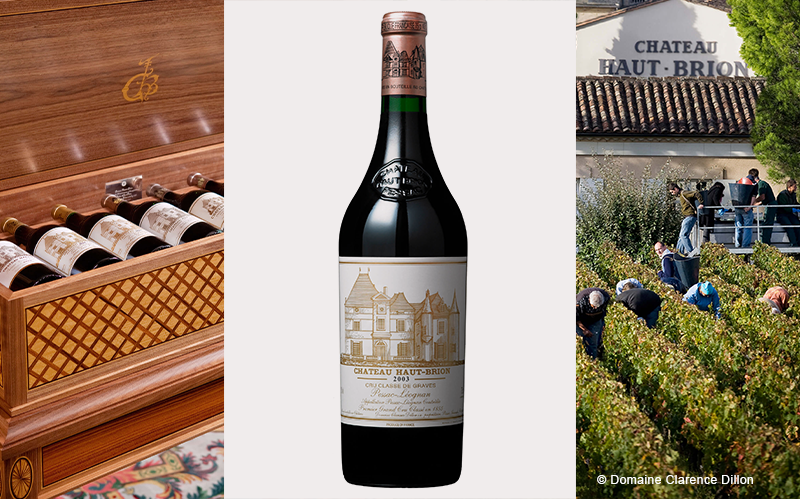
A quick look at dealerships and auctions shows: no origin is traded as frequently and passionately as Bordeaux. There are three good reasons for this.

On Friday, 10 April 1663, Samuel Pepys, 30 years old and building a career at the British Admiralty, wrote in his diary: “Off the Exchange with Sir J. Cutler and Mr. Grant to the Royall Oak Tavern, in Lumbard Street, where Alexander Broome the poet was […] and here drank a sort of French wine, called Ho Bryan, that hath a good and most particular taste that I never met with.”
The “Ho Bryan” wine mentioned by Pepys is still around today. It is a Château Haut Brion, the Premier Cru Classé from Pessac, a community with remarkable gravel soils that has long been absorbed by the city of Bordeaux. Samuel Pepys’ diary entry documents nothing less than the appearance of this wine under its own name on the English market, i. e. the beginnings of a brand. Before Arnaud de Pontac, the then owner of Haut Brion, established direct commercial contact with the receptive London wine scene, avoiding the Dutch merchants who were usually involved, Bordeaux wines had been traded anonymously. This had laid the ground for the later fame of the “Bordeaux” brand, but it was the distinction between individual vineyards – also in the matter of pricing – that would make Bordeaux a legendary origin for wines.
Classification for safety and trust

Accordingly, the first reason for Bordeaux’s dominance on the market for collectable wines is its long commercial history. In the past 350 years, market participants have had plenty of time to explore the Haut Brion vineyard, and many others, down to the smallest detail. In particular, they were able to experience the longevity of these wines, which is not the least important factor to consider when estimating how the value of these wines would be retained and increased. By the end of the 18th century, pricing for wines from individual chateaus and years had advanced so far that the percentage premiums and deductions between wines with different classifications are, to a large extent, reproduced to this day. The commercial lists circulating in the 18th century finally gave rise to the first printed wine guides – which in turn had a huge effect. When, for example, the German wine merchant William Franck published his “Traité sur les vins du Médoc” in 1824, it sold out quickly. The guide broke down the most well-known vineyards into four classifications (five in later issues), along with precise information on how many
“tonneaux” (900-litre barrels) the individual chateaus produced in an average year. Franck also included a table listing the prices of previous vintages. In its basic structure, this is the list that would gain official approval in 1855 on the occasion of the Exposition Universelle in Paris, and which is still valid for the classification of Médoc.
Crises overcome

The second reason for Bordeaux’s dominance is the stability resulting from its classification system. Accidental prices, which are common with wines from less hierarchical origins, are practically impossible on the Bordeaux market. One of the reasons for this is that the vineyards – at least in the Médoc – are by no means small properties.
A Premier Cru Classé such as Lafite Rothschild produces around 100,000 bottles of Grand Vin or more. Burgundy produced much rarer wines than Bordeaux, sometimes just 800 or 1,000 bottles per label. But the Bordeaux market will always have greater liquidity.
In recent years, other sources of wine have also secured a share of the fine wine market. Italy is being traded with increasing frequency, especially its classic products from Piedmont and Tuscany, but Californian cult wines are also gaining importance. These wine producers have yet to face many of the tests that Bordeaux has already passed if they are to participate in the fine wine market. Over the past centuries, Bordeaux has always emerged changed, but stronger, from every crisis. And that is the third reason why there is such great faith in the Bordeaux market. Whether phylloxera infestation, two world wars or the financial crisis: the monetary value of high-class Bordeaux wines has always recovered after every downturn. Newcomers to the fine wine market still need to prove they can do the same.
Ulrich Sautter, born in Constance and based in Hamburg, has been editor in chief for Falstaff Germany since 2014.











